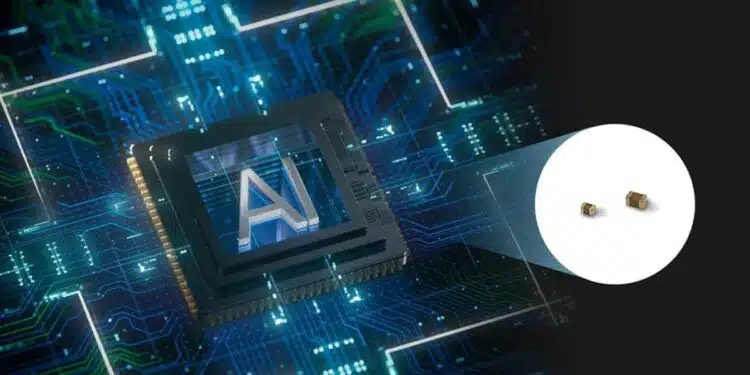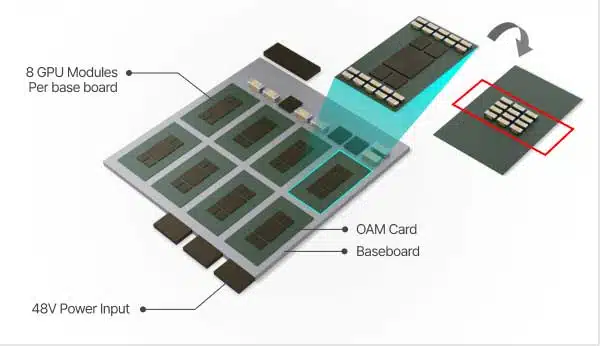Samsung Electro-Mechanics has developed two compact, high-capacitance MLCC ceramic capacitors: 0402, 47uF, X6S, 2.5V and 0603, 100uF, X6S, 2.5V to meet the specific needs of AI servers.
The structural design of AI servers involves stacking baseboards connected to multiple GPU Modules.
As dozens of ASICs/GPUs are integrated into a single Rack, the generated heat increases, posing a challenge for effective heat dissipation. To address this, MLCCs with characteristics comparable to or exceeding those of X6S dielectric class are essential: Capacitance change rate of ±22% over a temperature range spanning -55℃ to 105℃.
In response to the increased MLCC requirements for AI servers, Samsung Electro-Mechanics has developed two compact, high-capacitance MLCCs: CL05X476MS6N9W# (0402 inch, 47uF, X6S, 2.5V) and CL10X107MS8NZW# (0603 inch, 100uF, X6S, 2.5V). These MLCCs, are designed to meet the specific needs of AI servers.
In the case of AI servers, their power consumption is significantly higher than that of conventional servers, requiring a substantial number of MLCCs to be mounted. However, the placement of MLCCs near the GPU limits the available mounting area. To address this challenge, adopting compact, high-capacitance MLCCs can optimize PCB design and enhance thermal management efficiency.
Samsung Electro-Mechanics Compact High-Capacitance MLCCs for AI Servers
Additionally, incorporating the newly released MLCCs in AI servers can enhance the flexibility of designs and reduce ESL. When three 0402 inch, 47uF (CL05X476MS8N9W#) MLCCs are applied to the same mounting area as one 0805 inch, 100uF MLCC, the mounting area is reduced, and ESL characteristics can also be improved as shown in Figure 2.
Specifications
| Samsung MLCC | Size(inch/mm) | Capacitance | TCC | Related Voltage |
|---|---|---|---|---|
| CL05X476MS6N9W# | 0402/1005 | 47uF | X6S | 2.5Vdc |
| CL10X107MS8NZW# | 0603/1608 | 100uF | X6S | 2.5Vdc |


































